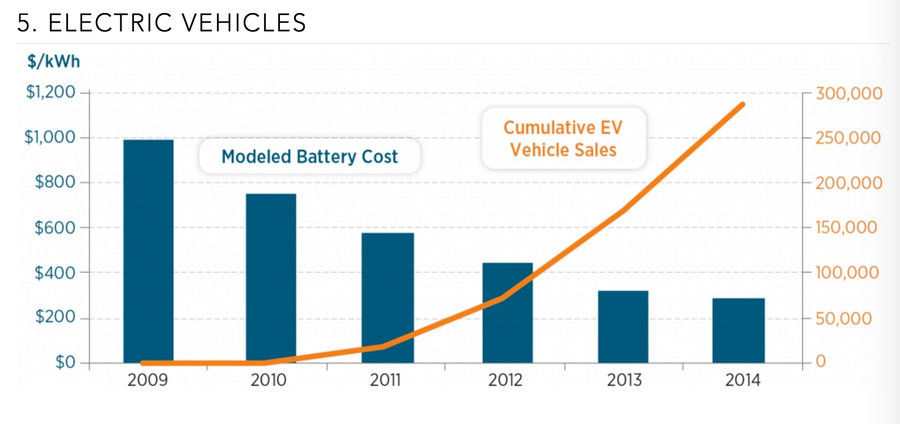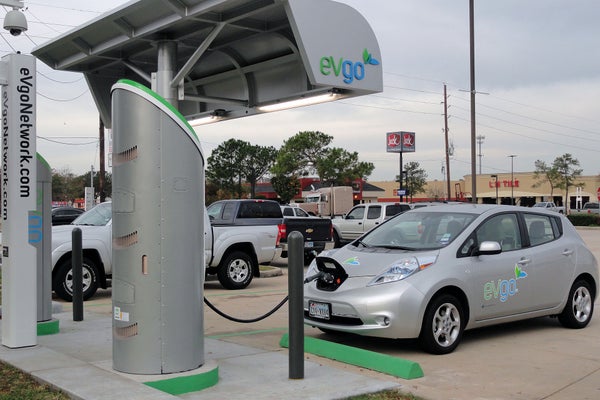This article was published in Scientific American’s former blog network and reflects the views of the author, not necessarily those of Scientific American
Battery costs for electric vehicles (EVs) have dropped by more than 60% since 2009, according to the U.S. Department of Energy (DOE). Over the same period, nearly 300,000 EVs have been sold across the country in a sharp upward trend.
As automakers work to meet rising fuel economy (CAFE) standards and increasing attention is paid to urban air pollution, it isn’t hard to believe that this EV trend will continue.

Credit: US DOE
On supporting science journalism
If you're enjoying this article, consider supporting our award-winning journalism by subscribing. By purchasing a subscription you are helping to ensure the future of impactful stories about the discoveries and ideas shaping our world today.
According to the DOE, these electric vehicles reduce greenhouse gas emissions by 48 percent compared to traditional cars running on gasoline and diesel. Furthermore, as more low-carbon technologies are used to generate power, EV greenhouse gas emissions will decrease.
In terms of other types of air pollution - namely particulate matter (PM) and nitrogen oxides (NOx) - while EVs won't eliminate pollution from vehicles, they would certainly help (a lot).
